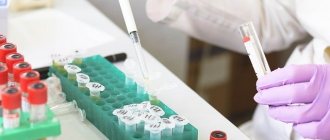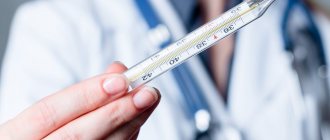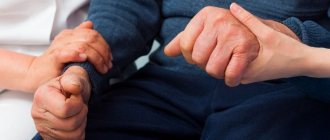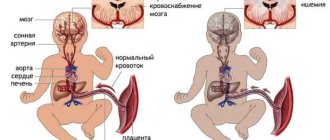Raynaud's disease refers to the condition of insemination of the fingers and toes. Gradually, the disease can develop into tissue necrosis, up to the loss of sore fingers. This happens due to particularly strong vasoconstriction. Quite often, the cause of the disease can be hypothermia, nicotine poisoning, stress and anxiety, as well as severe physical exertion.
The disease was first described in 1862 by the French physician Maurice Raynaud. Hence the name of the disease. According to ICD-10, Raynaud's disease has code 173.0. Let's take a closer look at the causes and risks of the disease, as well as its differences from the syndrome of the same name.
The difference between the disease and Raynaud's syndrome
As mentioned earlier, the discoverer of the disease was the French general practitioner Maurice Raynaud back in 1862. At that time, a woman came to see the doctor. She complained of periodic changes in the color of her fingers, most often the disease manifested itself after hypothermia or nervous strain. During the observation of the patient, a diagnosis was made, later called “Raynaud’s disease.”
Maurice Reynaud, in the process of observing the patient, made many important conclusions that still help determine the diagnosis. For example, prolonged cooling of the hands leads to spasm of blood vessels and blood circulation.
However, neither the French doctor nor his fellow followers were able to reveal the mechanism of development of the disease.
Over the past two centuries, statistics have been collected according to which:
- in Western countries with warm climates, there are much fewer cases of Raynaud's disease than in cold climates, to say nothing of our harsh winter;
- the number of young women significantly exceeds the number of sick men; with age, the ratio becomes 1:1;
- 90% of people suffering from scleroderma inevitably encounter this pathology.
Raynaud's disease and Raynaud's syndrome are two different concepts.
Diagnostics
The diagnosis of Raynaud's syndrome may not differ from the disease, since the measures taken are the same, with the only exception that in the first case the cause will be identified, but in the second it will not.
As a rule, making a correct diagnosis is not difficult, since all the symptoms are obvious. Another thing is to determine the cause, and this will require a comprehensive diagnostic procedure, which includes:
- blood test (general, immunological, coagulation);
- Ultrasound of the thyroid gland;
- study of blood vessels (capillaroscopy);
- X-ray of the neck;
- tomography of the cervical spine;
- Dopplerography of blood vessels.
There is no need to differentiate the disease, since such symptoms indicate exclusively this disease.
Disease risk
Raynaud's syndrome is a fairly rare vascular pathology. Residents of countries with cold climates are most susceptible to it. The vast majority of people suffering from this disease are women. The clinical picture of the disease looks like this: under the influence of low temperatures, prolonged vibrations or nervous overstrain, the patient suddenly experiences a spasm of small vessels localized in the extremities.
Main risk factors:
- Floor. Women get sick much more often than men.
- Terrain. People living in cold climates are more prone to the disease
- Heredity. About thirty percent of cases of the disease occur in relatives.
- Job. Exposure to vibration or working in a cold environment.
Both primary and secondary Raynaud's syndrome can be exacerbated by the use of substances that cause vasospasm (for example, smoking, drinking strong coffee), or the use of vasoconstrictor drugs (for example, triptans for migraines).
Symptoms
Symptoms in women and men are no different; in particular, the first stage is characterized by:
- pallor of the skin at the site of the disease;
- numbness;
- tingling in fingertips;
- mild pain or burning in the hands or feet.
As the disease progresses, attacks will intensify in both the intensity of the clinical picture and the duration of the course.
Symptoms of Raynaud's disease in the second stage appear:
- increased numbness of the limbs;
- cyanosis of the tips;
- swelling in the affected area.
Third stage
In the second stage, the attack lasts up to an hour, which causes severe discomfort to the patient (for example, in the first stage, even a longer attack is not as noticeable as in the second).
The third stage has the most severe symptomatic manifestations, including:
- severe numbness of the limbs;
- dystrophy of the upper parts of the fingers;
- formation of ulcers;
- formation of gangrene or osteolysis.
Osteolysis is the process of destruction of bone tissue.
Causes of the disease
The causes of Raynaud's syndrome are not fully understood. However, experts identify a number of factors that can lead to this dangerous disease:
- scleroderma;
- diseases of the blood and blood vessels;
- dermatomyositis;
- severe hypothermia;
- frostbite;
- injuries;
- rheumatism;
- hormonal disorders;
- uncontrolled therapy with certain medications;
- dysfunction of internal organs;
- stress;
- heredity;
- pulmonary hypertension;
- infections.
The provocation and development of pathology is facilitated by:
- vibration disease;
- side effects of antitumor, beta-blocking drugs, clonidine and other peripheral agents in case of prolonged use;
- endocrine disorders (hypothyroidism, pheochromocytoma) and Down syndrome;
- overwork and emotional stress;
- prolonged exposure to low temperatures.
Forecast
It is possible to cure Raynaud's syndrome, and in this situation everything will depend on the underlying disease that provokes the attacks. As for the idiopathic form of the disease, not everything is so simple and in some cases long-term and constant treatment may be required.
I establish disability for this disease in the second and third stages, and if in the third stage there are no problems with assigning a disability group, in the case of the second it is necessary to prove that the disease cannot be treated and there are contraindications for work. At the first stage, a disability group is not assigned.
So, Raynaud's syndrome is a serious neurological pathology that requires increased attention, as it can lead to amputation. If you notice symptoms of the disease, immediately consult a doctor and follow his recommendations.
Treatment of Raynaud's disease
There are two groups of treatment – conservative and surgical.
Conservative methods - the use of drugs to dilate blood vessels. Treatment with medications lasts throughout the patient’s life; as a rule, complications arise with long-term use.
When attacks of vasospasms of the extremities become insensitive to vasodilators, surgical treatment of Raynaud's disease is recommended - sympathectomy. It involves removing or stopping the nerve fibers of the sympathetic trunk that cause spasms of the arteries. Endoscopic sympathectomy is considered the least traumatic type of surgical treatment for Raynaud's disease. During it, the patient, under general anesthesia, has a clip applied to the sympathetic trunk in the chest or neck area.
Classification and stages
There are three stages of Raynaud's disease:
- Angiospastic.
- Angioparalytic.
- Trophoneurotic.
Stage 1
This stage is also called vasotrophic, since it is at the first stage that vasospasm occurs. Any of the reasons listed above can be a provoking factor for this spasm. The angiospastic stage lasts up to eight hours. All this time the vessels can be in good shape. Depending on the duration of the spasm, the fingers first have a pale color (whiten), after which the blood returns to them and does not turn red.
Stage 2
At this stage, the nervous regulation of the vessels of the extremities is destroyed. The main sign that stage 2 of the attack has occurred is that the top of the fingertips turns blue, in addition, loss of sensitivity is possible (sensitivity is lost due to the death of nerve endings)
Stage 3
The last stage is characterized by the inability to maintain the tone of contracted vessels for a long time, characterized by the formation of trophic ulcers, as well as ischemia of the fingers or toes. At this stage, blood supply is no longer restored on its own. The use of medications is necessary.
Treatment with traditional methods
Fir baths are considered an effective folk remedy in the treatment of Raynaud's syndrome. They are prepared like this: add 5-6 drops of fir oil into warm water (not lower than 38 degrees) and take a bath for 15 minutes. Herbalists also allow fir oil to be taken internally - 1-2 drops on a small piece of bread in the morning. This traditional method of treatment is also contraindicated for people with diseases of the stomach, pancreas, and gastrointestinal tract.
Another folk recipe that can be used not only for Raynaud's syndrome, but also for other vascular diseases. Take half a glass of fresh onion juice, mix with half a glass of honey. Take the resulting mixture 1 tablespoon at a time. We remind you that these traditional medicines can only be used after consultation with a doctor. By taking medications and folk remedies together, you can get rid of Raynaud's syndrome.
In folk medicine, Raynaud's disease is treated with a mixture of alcoholic tinctures of plants. Mix vodka infusions of garlic, alfalfa and ginger rhizomes (prepared in a ratio of 1:10). Take 1 teaspoon three times a day.
There is another recipe that helps with this ailment. For it you need to take pine needles of a young tree, finely chop them and add 2-3 tablespoons of rose hips, 5 tablespoons of honey, 3 tablespoons of onion peels. Then pour this mixture with a liter of water and boil for 10 minutes. Place all this in a thermos and leave overnight. The next day, filter and drink half a glass 4-5 times during the day.
Prevention
The disease is classified as serious, so it is important to adhere to the recommendations below:
- It is necessary to visit a vascular surgeon and neurologist at least once a year, and more often during remission.
- Avoid smoking areas and stop smoking (nicotine can cause spontaneous vasoconstriction).
- Temper your limbs, for which contrast baths are well suited.
- Don't neglect such little things as gloves or mittens.
- Avoid nervous shocks and stress, distance yourself from them, as the human nervous system can react to a small quarrel with a large attack.
Physiotherapy will help overcome the disease
Massage your fingers and feet every day. You can massage using sea buckthorn oil or herbal infusions that help dilate blood vessels.
Practice walking barefoot. This is an extremely useful thing that will help strengthen blood vessels. In winter, walk around the apartment without slippers, and in summer, walk barefoot.
Don't forget about taking a contrast shower. It will help strengthen blood vessels, restore thermoregulation, and strengthen the immune system.
Take fir baths. Fill the bathtub with hot water and add a few drops of fir oil. You should take a bath no more than a quarter of an hour.
To prevent your hands from dying in winter, make it a rule to lubricate them before leaving the house with water mixed with glycerin in equal proportions.
Stopping an attack “with your own hands”
The main healing factor is heat, which helps relieve vascular spasm. If you feel that your hands have become very cold, tingling, have lost sensitivity, and have acquired a porcelain-white hue, then you need to:
Urgently get to a warm place, or at least hide your hands under clothes;
Vigorous rubbing and massage can help restore blood flow. You can rub only if there are no trophic lesions on your hands, otherwise you can only aggravate the situation;
If possible, place your hands under warm water that is only slightly above body temperature. Too hot water can cause a paradoxical increase in spasm (after all, when you first enter a hot steam room, many people experience “goose bumps” for a short time);
Sometimes, at the very beginning of the onset of unpleasant sensations, vigorous shaking of the arms raised above the head helps.
Related posts:
- Antibiotics: what they are and why they are needed Antibiotics are medications used to prevent and treat bacterial…










